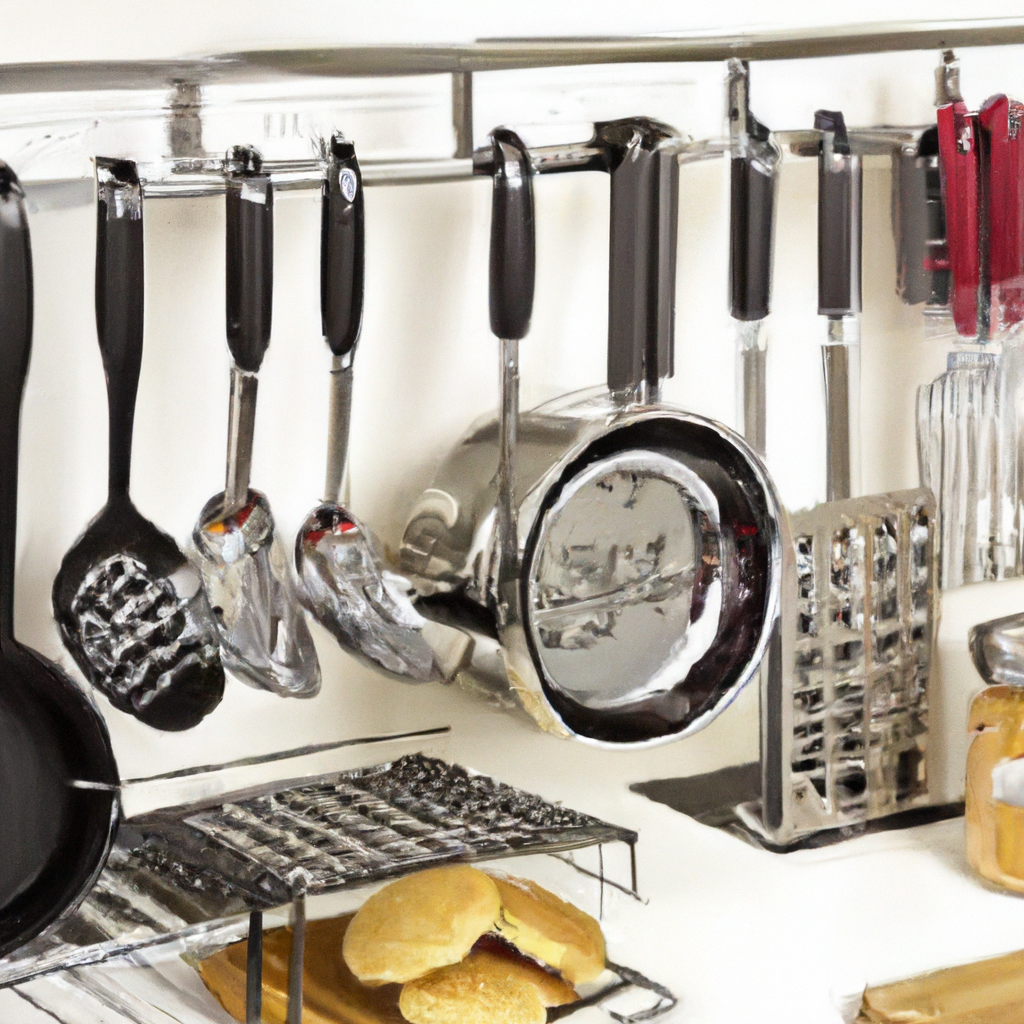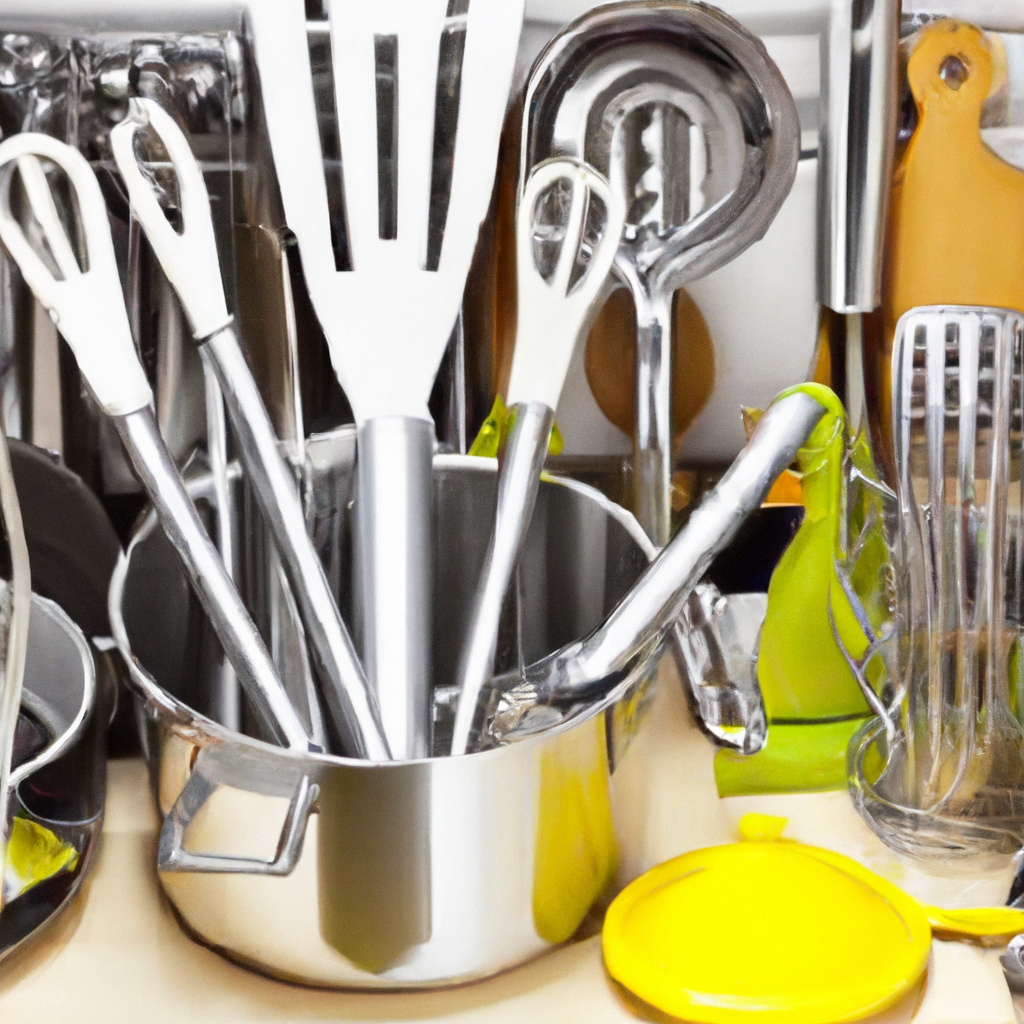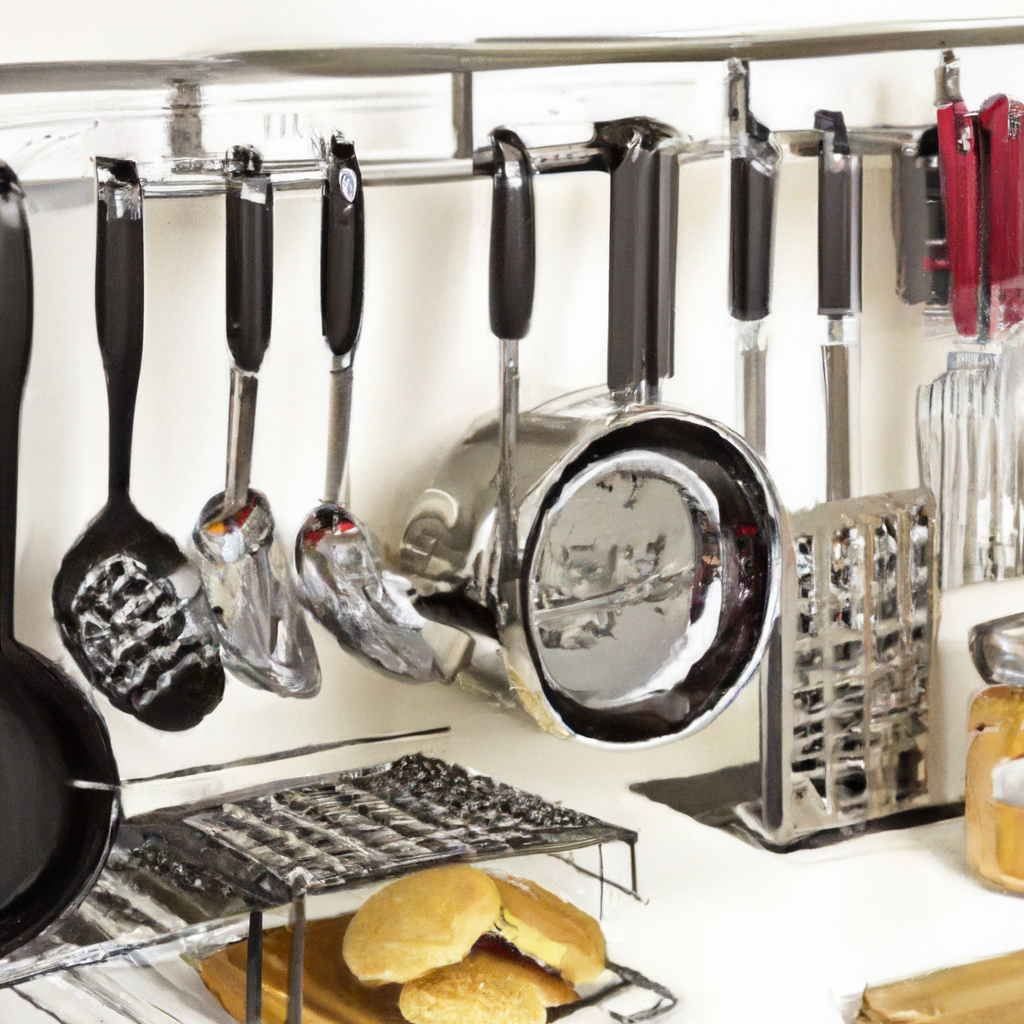You’ve finally decided to upgrade your kitchen utensils, but with so many options available, where do you begin? In this comprehensive guide, we’ll help you navigate through the sea of kitchen utensils and find the best ones for your culinary adventures. From essential tools like knives and measuring spoons to specialized gadgets, we’ll cover everything you need to know to make informed decisions. Say goodbye to flimsy spatulas and dull knives, and say hello to a kitchen filled with the best utensils that will elevate your cooking experience. Get ready to unleash your inner chef and create culinary masterpieces with the ultimate kitchen utensils by your side.
The Ultimate Guide to Choosing the Best Kitchen Utensils
Choosing the right kitchen utensils can make a world of difference in your cooking experience. With a wide range of options available, it can be overwhelming to determine which utensils are best suited to your needs. This comprehensive guide will walk you through the various factors to consider when selecting kitchen utensils, as well as provide recommendations for essential, basic, specialized, baking, and grilling utensils. Additionally, it will offer tips on care and maintenance, and discuss the importance of considering ergonomics, budget, and quality.
1. Understanding Your Needs
Determining your cooking style
Before embarking on your quest for the perfect kitchen utensils, take a moment to consider your cooking style. Are you an avid home cook who loves experimenting with different techniques? Or do you prefer quick and simple recipes? Understanding your cooking style will help you prioritize the utensils that are essential for your kitchen.
Considering the type of cuisines you prepare
Another important aspect to consider is the type of cuisines you typically prepare. If you are a fan of Asian cuisine, for example, you may require utensils such as chopsticks or a wok spatula. On the other hand, if baking is your passion, you will need a different set of utensils compared to someone who primarily cooks savory dishes.
Assessing your current utensil collection
Before investing in new kitchen utensils, it is helpful to evaluate your current collection. Take a look at what you already have and identify any gaps or items that need replacement. This assessment will ensure that you only purchase utensils that are truly necessary and avoid duplicating items you already own.
2. Material Matters
When it comes to kitchen utensils, the choice of material is crucial. Different materials offer various advantages and disadvantages in terms of durability, heat resistance, and compatibility with different types of cookware. Here are some common materials to consider:
Stainless Steel Utensils
Stainless steel utensils are a popular choice due to their durability and resistance to rust and corrosion. They are also heat-resistant and can be used with all types of cookware without causing any damage. However, be mindful of stainless steel utensils with thin handles, as they may become hot during cooking.
Wooden Utensils
Wooden utensils have a timeless appeal and are gentle on delicate cookware, such as non-stick pans. They are heat-resistant and do not scratch or damage your pots and pans. However, they require proper care to prevent moisture and bacteria buildup, and they may need to be replaced over time.
Silicone Utensils
Silicone utensils offer the advantages of both stainless steel and wooden utensils. They are heat-resistant, gentle on cookware, and come in a variety of shapes and sizes. The flexibility of silicone makes it easy to scrape bowls and pans, and they are dishwasher-safe, making clean-up a breeze.
Plastic Utensils
Plastic utensils are lightweight and affordable, making them a popular choice for casual or outdoor use. While they may not be as durable as other materials, they are suitable for basic cooking tasks. However, it is important to choose BPA-free and food-grade plastic utensils to ensure safety.
Nylon Utensils
Nylon utensils are similar to silicone utensils in terms of heat resistance and compatibility with non-stick cookware. They are durable, lightweight, and affordable. However, they may not be as sturdy as stainless steel or wooden utensils and can melt if exposed to high heat.

3. Essential Utensils
Certain kitchen utensils are considered essential for any cook, regardless of their cooking style or preferred cuisine. These utensils are versatile and can be used for a wide range of tasks. Here are some examples:
Chef’s Knife
A high-quality chef’s knife is the backbone of any kitchen. It can be used for chopping, mincing, slicing, and dicing a variety of ingredients. Look for a knife that feels comfortable in your hand and has a strong, sharp blade.
Cutting Board
A good cutting board is essential to protect your countertops and knives. Opt for a durable and easy-to-clean cutting board made of materials such as wood or plastic. Consider having separate cutting boards for meat, poultry, and vegetables to prevent cross-contamination.
Mixing Bowls
Mixing bowls are versatile utensils that can be used for whisking, mixing, and storing ingredients. Choose a set of mixing bowls in various sizes to accommodate different recipes. Stainless steel or glass bowls are popular options due to their durability and ease of cleaning.
Measuring Cups and Spoons
Accurate measurements are crucial for achieving consistent results in cooking and baking. Invest in a set of high-quality measuring cups and spoons made of materials such as stainless steel or plastic. Look for clear measurements that are easy to read and a design that allows for easy pouring.
Whisk
A whisk is a versatile tool that can be used for mixing, whisking, and incorporating air into batters and sauces. Opt for a whisk with sturdy wires and a comfortable handle for seamless whisking.
4. Basic Cooking Tools
In addition to essential utensils, there are several basic cooking tools that can greatly enhance your culinary endeavors. These tools are designed for specific tasks and can make cooking more efficient. Here are some examples:
Spatula
A spatula is a must-have tool for flipping and turning food, such as pancakes or burgers, without causing any damage to the surface. Look for a spatula with a heat-resistant and sturdy blade that can withstand high temperatures.
Tongs
Tongs are versatile utensils that can be used for gripping, flipping, and serving food. Look for tongs with a locking mechanism for easy storage and a comfortable grip for extended use.
Ladle
A ladle is an essential tool for serving soups, stews, and sauces. It should have a long handle for reaching deep pots and a deep bowl for holding a substantial amount of liquid. Consider investing in a ladle made of heat-resistant material, such as stainless steel, to avoid any melting or warping.
Slotted Spoon
A slotted spoon is ideal for retrieving and draining food from liquids, such as poached eggs or boiled vegetables. Look for a slotted spoon with slots that are small enough to prevent food from falling through, but large enough to drain efficiently.
Grater
A grater is a versatile tool used for grating cheese, vegetables, or spices. Look for a grater with different grating options, such as coarse, fine, and zesting, to accommodate various recipes. Consider a grater with a comfortable handle and a stable base for easy grating.

5. Specialized Tools
As you delve deeper into the culinary world, you may find yourself needing specialized tools for specific tasks. These tools are designed to make certain cooking techniques easier and more efficient. Here are some examples:
Can Opener
A can opener is an essential tool for opening canned goods. Look for a can opener with a sharp cutting wheel and a comfortable grip for easy use. Electric can openers are also available for added convenience.
Peeler
A peeler is a handy tool for removing the skin of fruits and vegetables. Look for a peeler with a sharp blade and an ergonomic handle for comfortable peeling. There are different types of peelers available, including swivel peelers and julienne peelers, which offer different functionalities.
Garlic Press
A garlic press is a time-saving tool that allows you to crush garlic cloves quickly and effortlessly. Look for a garlic press with a sturdy construction and an easy-to-clean design. Some garlic presses also come with a built-in cleaner to remove any residual garlic pulp.
Citrus Juicer
A citrus juicer is a useful tool for extracting juice from citrus fruits, such as lemons, limes, and oranges. There are manual citrus juicers as well as electric juicers available. Consider the capacity and ease of use when selecting a citrus juicer.
Pizza Cutter
If you frequently enjoy homemade pizzas, a pizza cutter is a must-have tool. Look for a pizza cutter with a sharp wheel and a comfortable handle for smooth and effortless slicing. Some pizza cutters also come with a blade cover for safety during storage.
Pasta Server
A pasta server is specifically designed for lifting and serving pasta from a pot. Look for a pasta server with long prongs or a wide scoop to help separate and lift the pasta strands. Consider a pasta server made of heat-resistant material to withstand the hot pasta.
6. Utensils for Baking
Baking requires a different set of utensils compared to regular cooking. From dough preparation to frosting, here are some utensils often used in baking:
Rolling Pin
A rolling pin is a crucial tool for rolling out dough for pies, cookies, and pastries. Look for a rolling pin with smooth and nonstick surfaces to prevent dough from sticking. Consider the material and weight that feels comfortable in your hands.
Pastry Brush
A pastry brush is used for glazing, applying egg washes, and brushing melted butter or sauces onto pastries. Look for a pastry brush with soft bristles and a comfortable handle. Consider the size and shape that suits your baking needs.
Sifter
A sifter is used to aerate and remove lumps from dry ingredients, such as flour or cocoa powder. Look for a sifter with a fine mesh screen and a comfortable handle. Some sifters come with multiple screens for different sieving options.
Baking Spatula
A baking spatula, also known as an offset spatula, is useful for spreading and smoothing batters, frosting cakes, or lifting delicate baked goods. Look for a baking spatula with a thin and flexible blade that offers control and precision. Consider the length, width, and flexibility that suits your baking preferences.
Pastry Scraper
A pastry scraper, also known as a bench scraper, is a versatile tool for scraping dough, cutting butter, or cleaning countertops. Look for a pastry scraper with a comfortable handle and a sturdy blade. Some pastry scrapers also have measurement markings for precise cutting or portioning.
Cookie Scoop
A cookie scoop is designed to portion and shape cookie dough uniformly. It ensures consistent cookie sizes and speeds up the dough portioning process. Look for a cookie scoop with a comfortable grip and a mechanism that releases the dough easily. Consider the size options available for different cookie sizes.
7. Tools for Grilling
Grilling enthusiasts require a specific set of utensils to enhance their outdoor cooking experience. Here are some essential tools for grilling:
Grill Tongs
Grill tongs are longer and designed for maneuvering food on the grill. Look for tongs with a sturdy and heat-resistant construction. Some grill tongs have locking mechanisms for easy storage and a comfortable grip for prolonged use.
Grill Brush
A grill brush is an essential tool for cleaning grill grates before and after cooking. Look for a grill brush with sturdy bristles and a long handle for easy reach. Consider a grill brush with a scraper edge for removing stubborn debris.
Skewers
Skewers are used for threading and grilling meat, poultry, seafood, or vegetables. Look for skewers made of sturdy material, such as stainless steel or bamboo. Consider the length and thickness that suits your grilling needs.
Basting Brush
A basting brush is used to apply marinades, sauces, or glazes onto food while grilling. Look for a basting brush with heat-resistant bristles and a comfortable handle. Silicone bristles are often preferred, as they are easy to clean and do not retain flavors.
Meat Tenderizer
A meat tenderizer is a tool used to tenderize tougher cuts of meat for grilling. Look for a meat tenderizer with sharp blades or spikes for effective tenderizing. Some meat tenderizers also have a textured side for pounding or flattening meat.
8. Care and Maintenance
Proper care and maintenance of kitchen utensils ensure longevity and hygienic use. Here are some tips:
Cleaning and sanitizing
After each use, wash your utensils with warm soapy water and a non-abrasive sponge or cloth. If your utensils are dishwasher-safe, you can also opt for dishwasher cleaning. For wooden or silicone utensils, avoid soaking them in water for extended periods and instead clean them with mild soap and warm water.
Proper storage
Store your utensils in a clean and dry utensil holder or drawer to prevent dust accumulation and maintain their quality. To avoid damage, consider using utensil organizers or drawer dividers to keep them separated and prevent scratching or bending.
Replacing worn-out utensils
Over time, kitchen utensils may become worn out or damaged. Regularly inspect your utensils for any signs of wear and tear, such as loose handles or bent blades. Replace any utensils that are no longer safe or functional to avoid any accidents during cooking.
9. Considering Ergonomics
When selecting kitchen utensils, it is important to consider ergonomics to ensure comfortable and efficient use. Here are some factors to consider:
Handle grip
Opt for utensils with handles that provide a comfortable and secure grip. Look for handles made of materials such as rubber or silicone, as they offer enhanced grip and reduce the risk of slippage.
Weight and balance
Consider the weight distribution and balance of the utensils. Utensils that are too heavy or unbalanced can strain your wrists and make cooking more difficult. Look for utensils that feel well-balanced and comfortable to hold.
Ease of use
Choose utensils that are easy to use and maneuver. Consider factors such as the length and angle of handles, the thickness or flexibility of blades, and the overall design of the utensils. Ergonomically designed utensils can make cooking tasks more enjoyable and efficient.
10. Budget and Quality
When it comes to kitchen utensils, finding the right balance between budget and quality is key. While it is tempting to opt for cheaper options, investing in high-quality utensils can save you money in the long run. Here are some tips:
Finding the balance
Set a budget that aligns with your needs and prioritize the utensils that are essential for your cooking style. It is possible to find quality utensils within a reasonable price range by comparing different brands and materials.
Avoiding cheaply made utensils
Be cautious of utensils that are excessively cheap or made from low-quality materials. Cheap utensils may not withstand regular use or exposure to heat, and they may pose safety risks. Look for reputable brands and read customer reviews to ensure the utensils are of good quality.
Investing in durable options
Consider kitchen utensils as long-term investments. High-quality utensils may have a higher upfront cost, but their durability and performance can save you money in the long run. Quality utensils are less likely to break or wear out quickly, resulting in a more cost-effective and enjoyable cooking experience.
In conclusion, choosing the best kitchen utensils involves understanding your cooking style, considering the cuisines you prepare, and assessing your current utensil collection. Material matters, and each type of material has its advantages and considerations. Essential, basic, specialized, baking, and grilling utensils are all important to have on hand. Proper care and maintenance, as well as considering ergonomics, will ensure the longevity and usability of your utensils. Finally, finding the right balance between budget and quality will lead to the most satisfying and efficient cooking experience. Happy cooking!

